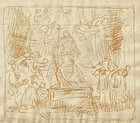William Strang
(1859-1921)
Scottish Engraver-Painter William Strang is one of the “oldest” artists, represented in the Sacred Art Pilgrim Galleries. He straddles the collection’s benchmark date of 1900 not only in chronological years but in his conception of art, having kept one foot in the 19th century and the other, tentatively, in the modern era. While his contemporaries at London’s Slade School of Art were drawn to Impressionism and other new artistic currents, coming from the Continent, Strang remained a loyal follower of his teacher, Alphonse Legros, a firm believer in Realism, who was a key figure in the late 19th century Anglo-French revival of the art of etching.
In the later two decades of his life, Strang became more of a painter than print-maker, coming under the sway of Post-Impressionists like Paul Gauguin, but his style remained idiosyncratic, as if he could never make up his mind to which age he truly belonged. Strang is best remembered, nowadays, for his finely rendered etchings, mezzotints and drypoints.
Biblical themes appear frequently in Strang’s work. A consummate book-illustrator, Strang created cycles of etchings for John Bunyan’s The Pilgrim’s Progress and Poet Cosmo Monkhouse’s The Christ Upon the Hill. The socialist leanings of this builder’s son from Dumbarton come through clearly in the realistic studies of rural poverty he created for Monkhouse’s ballad about Christ’s appearance to an aging farm couple with a simpleton son. Consider, as well, Road to Emmaus, where the Risen Christ finds fellow travelers among the contemporary dispossessed; the rarely illustrated Parable of the Vineyard Laborers with its curious view of First Century worker-employee relations; the beggar outside the gates in The Parable of Lazarus and Dives; and his study of social contrasts in The Prodigal Son.
Like his mentor, Legros, Strang was fascinated by the supernatural and macabre. In The Raising of Lazarus, we see the barely resuscitated corpse looming large while Christ remains a faint figure in the background. In the final plate of The Christ Upon the Hill, Strang offers the ghoulish spectacle of the farmer’s simpleton son, lying crushed beneath a fallen road side cross.
The four drawings in my collection come from Strang’s sketch books, once belonging to Laurence Hodson, a brewer from Wolverhampton and dedicated patron of Strang and the Arts and Crafts Movement of William Morris. Hodson commissioned a cycle of paintings from the artist on the story of Adam and Eve for his library. The first charcoal drawing, Pieta, may be a preparatory sketch for another religious work, purchased by Hodson. The figural composition of The Scourging, on the reverse side of the same sheet, recalls a plate from The Pilgrim’s Progress, depicting the scourging of Faithful.
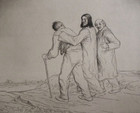
Road to Emmaus
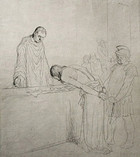
Christ Before Pilate
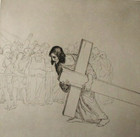
Road to Calvary
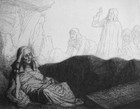
Raising of Lazarus
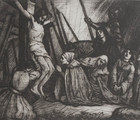
Women at the Cross
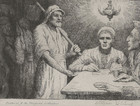
Payment of the Vineyard Laborers
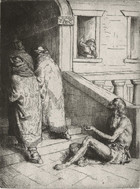
The Parable of Lazarus & Dives

The Prodigal Son
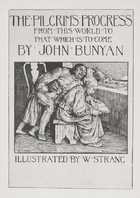
Title Page
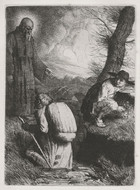
The Slough of Despond
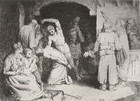
The Scourging of Faithful
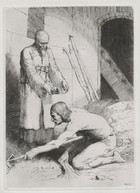
The Man & the Muckraker
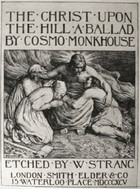
Title Page
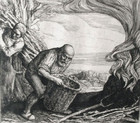
The Christ Upon the Hill (Plate I)
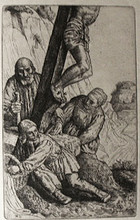
The Christ Upon the Hill (Plate III)
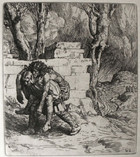
The Christ Upon the Hill (Plate V)

The Christ Upon the Hill (Plate VI)
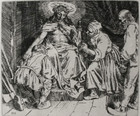
The Christ Upon the Hill (Plate VII)

The Christ Upon the Hill (Plate VIII)
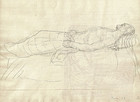
Pieta
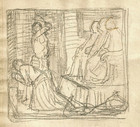
The Scourging
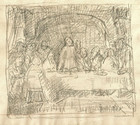
The Last Supper
